Living rooms, essential spaces in homes, vary in size, shape, function, and design. Sizes range from 160 square feet (15 square meters) to 215 square feet (20 square meters) for standard rooms to over 535 square feet (50 square meters) for grand living spaces. Living rooms serve as social hubs for entertaining guests, watching TV, and relaxing. Standard furniture includes sofas, coffee tables, armchairs, TV stands, side tables, bookshelves, and ottomans. The standard ceiling height is 26 square feet (2.4 square meters) to 29 square feet (2.7 square meters), providing a balance of spaciousness and intimacy. Popular living room colors are beige, gray, blue, green, white, red, and yellow, each offering a unique ambiance. Energy efficiency in living rooms is achieved by controlling standby power loss, using energy-efficient lighting, improving insulation, selecting energy-rated appliances, and optimizing furniture placement for airflow. An architect can contribute to a living room upgrade, offering expertise in space optimization, lighting design, material selection, custom furniture and storage, architectural detailing, technology integration, and creating focal points. The redecoration timeframe varies from 2 to 8 weeks, depending on the project’s scope, furniture delivery, customization work, and professional involvement. Homeowners face challenges in redecorating, such as budget constraints, design decision overwhelm, limited space, finding reliable contractors, balancing trends with timelessness, managing disruption, and integrating new elements with existing features. Overcoming these struggles involves careful planning, balancing aesthetics with functionality, and adapting to temporary inconveniences during renovation.
What is the typical size of a living room?
A typical home living room ranges from 160 square feet (15 square meters) to 215 square feet (20 square meters). This fits a 6.5-foot (2-meter) sofa with 6 square feet (0.6 square meters) end tables having 9 square feet (0.9 square meters) clearance in front for foot traffic and 3 feet (90 centimeters) behind for reclining. An additional pair of chairs or loveseats lined along a 12-square-foot (1.2 square meters) side table accommodates 4-5 people visiting comfortably. The ceiling height is the standard residential 8 feet (2.4 meters). The average living room measures 215 square feet (20 square meters) to 325 square feet (30 square meters). The broader and deeper standard furniture and supplementation, such as media cabinets, fit more extensively. The interior 8-foot (2.4-meter) ceiling height remains typical, with over 10 feet (3 meters) in length to incorporate traffic paths around furnishings.
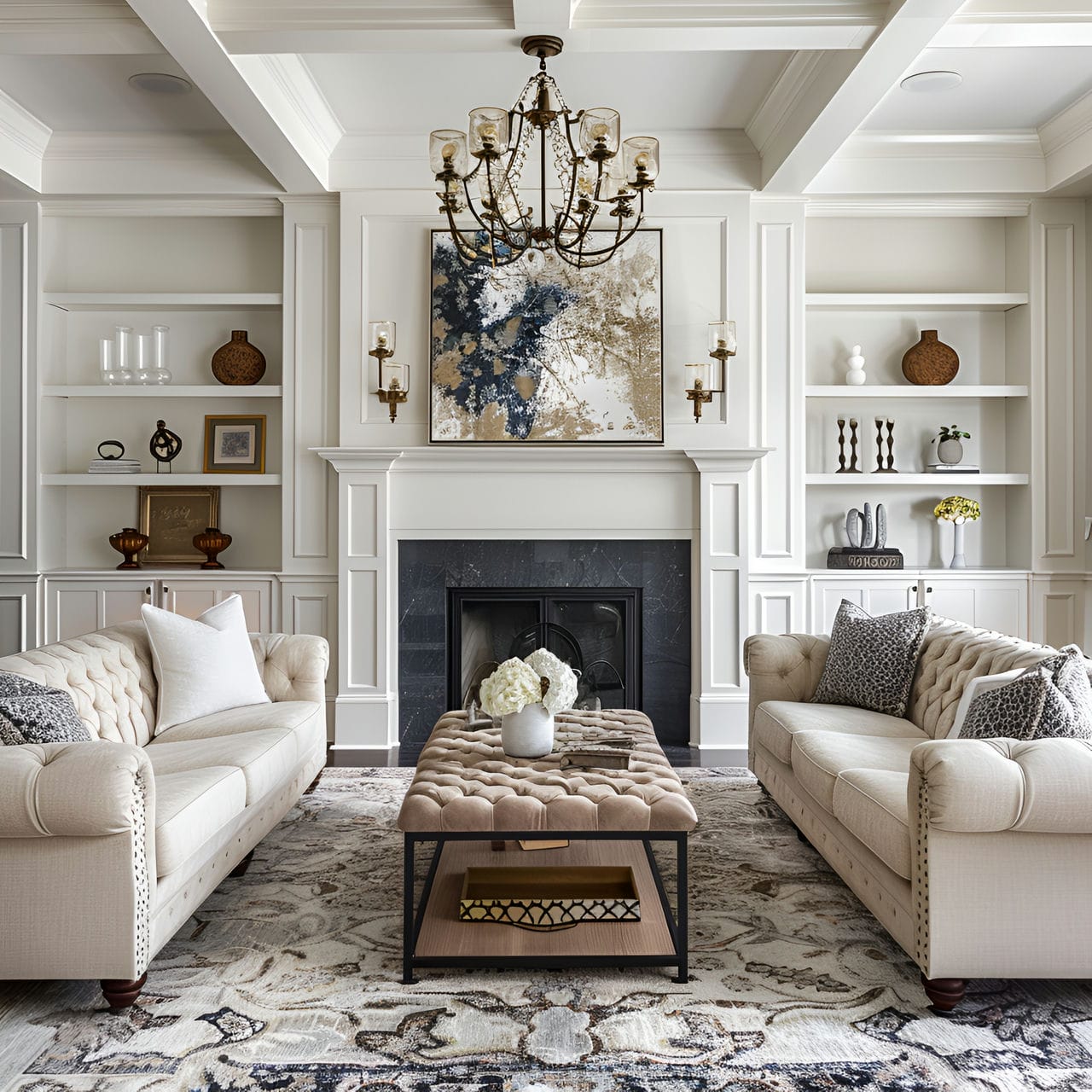
Grand living spaces exceed 375 square feet (35 square meters), reaching 535 square feet (50+ square meters). Soaring 9-foot (2.7 meters) ceilings add a sense of grandeur, while distances spanning 13-16 feet (4-5 meters) between furniture groupings create multiple distinct conversation areas, allowing parties to circulate.
What is the use and purpose of a living room?
The purpose of a living room is to provide a main social hub of the home, offering a place for both formal entertaining and casual daily living. Firstly, the living room is the central gathering place for family and friends, where people spend time together, engage in conversations, and create memories. It is considered due to its multifunctional nature, accommodating activities such as watching movies, playing games, or simply relaxing. Secondly, the living room is the first room visitors see upon entering a house, setting the tone for the rest of the home. It represents the homeowner’s style and taste, often decorated with items that reflect the family’s interests and values. Thirdly, the living room can vary in formality, from a more formal space for entertaining guests to a casual, comfortable escape for reading or a cocktail. The living room’s design and decor can impact the home’s atmosphere and aesthetic. Lastly, the living room also functions as a family room, providing a more casual setting for daily activities like TV watching and video gaming. Due to space constraints, the living room may still serve this dual function in smaller houses.
What is the typical shape of a living room?
The typical shapes of a living room are rectangular or square to optimize seating arrangements, traffic flow, and multi-purpose utility. Average rectangular layouts situate the longest walls spanning 45 square feet (4 meters) to 60 square feet (5.5 meters) facing each other with narrow ends ranging from 28 square feet (2.5 meters) to 40 square feet (3.5 meters). This shape fits sectional sofas or separate seating concentrations while defining individual spaces through area rug placement.
Square living rooms from 40 square feet (3.5 square meters) to 60 square feet (5.5 square meters) keep furniture groupings accessible with open flow around accent chairs and tables. Living areas adopt versatile quadrants or “L” shapes using multiple walls for split floorplans or interconnected available concepts. Typical family living room floorplans remain pragmatic rectangles and squares between 45 square feet (4 meters) and 60 square feet (5.5 meters) in even length and width.
What furniture commonly equips a living room?
Listed below are the types of furniture commonly equip a living room:
- Sofa: The sofa is the centerpiece furniture of the living room. It provides comfortable seating for multiple people and sets the tone for the room’s style. Sofas come in various sizes, shapes, and materials, from large sectionals to smaller two-seaters, and can be chosen to match the room’s decor.
- Coffee table: A coffee table is a central furniture point in the living room where people can place drinks, books, or decorative items. It is set in front of the sofa and can be round, square, or rectangular.
- Armchairs: Armchairs provide additional seating furniture and can add a touch of style to the living room. They can be chosen to match the sofa or to provide a contrasting accent. Some armchairs also recline for added comfort.
- TV stand: A TV stand or entertainment center is crucial furniture in many living rooms. It provides a place to set up the television and often includes storage for other media equipment, DVDs, and more.
- Side tables: Side tables, or end tables, are furniture placed next to sofas or armchairs for living rooms. They provide a surface for lamps, drinks, or decorative items, including drawers or shelves for additional storage.
- Bookshelves: Bookshelves are furniture that can store books, display decorative items, or hold media equipment. They come in various sizes and styles, from tall, freestanding units to more minor, wall-mounted shelves.
- Ottomans: Ottomans are versatile furniture that can serve as footrests, extra seating, or even coffee tables. Some ottomans also offer storage inside, making them a practical addition to a living room.
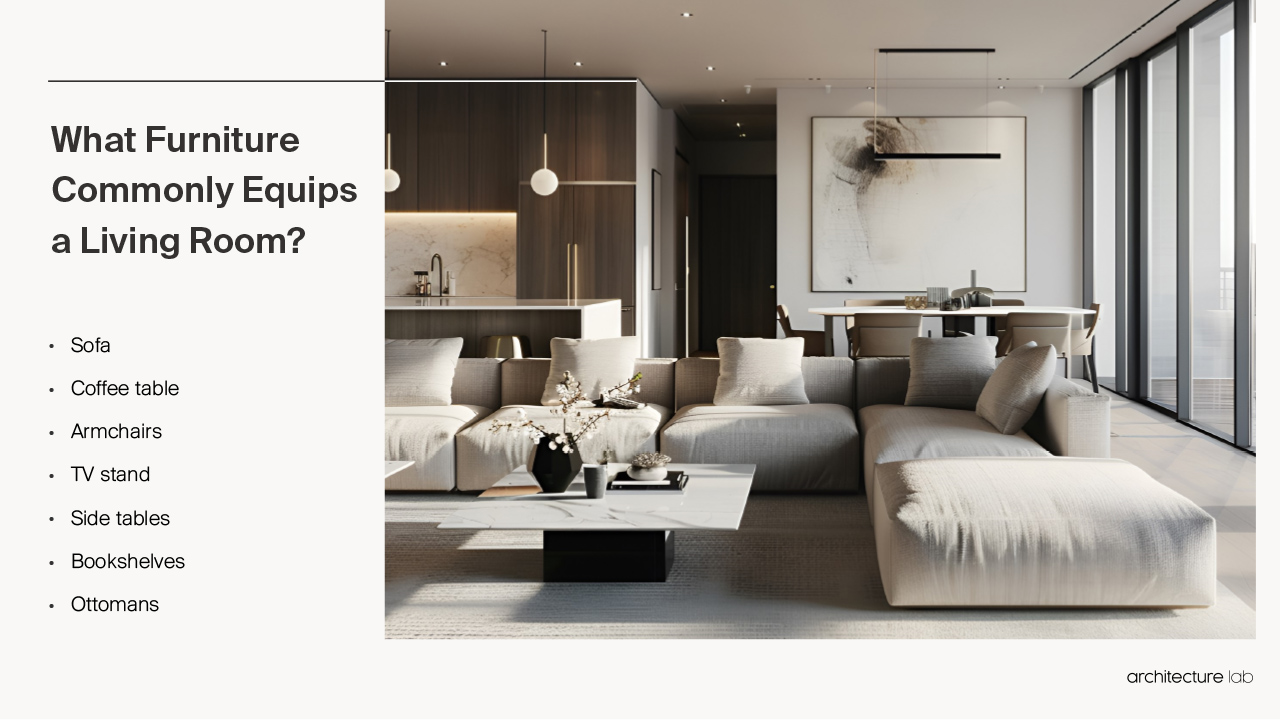
What is the normal ceiling height of a living room?
The normal ceiling height of a living room ranges from 26 square feet (2.4 square meters) to 29 square feet (2.7 square meters) to maximize vertical space while retaining proportionate scale. Average heights allow convenient positioning for most lighting fixtures and ceiling fans without infringing on required headroom. Contemporary living rooms may incorporate ceilings starting at 27 square feet (2.5 square meters) to 32 square feet (3 square meters), providing a slightly generous sense of airflow and volume. Smaller footprint living zones under 215 square feet (20 square meters) feel confined by ceilings exceeding 29 square feet (2.7 square meters). Grand estate living rooms elevate architectural details with towering heights of up to 48 square feet (4.5 square meters).
What colors are the living rooms usually painted?
Listed below are the paint colors usually used in living rooms:
- Beige: Living rooms frequently use beige for its warm and neutral appeal. This color offers versatility and simplicity, effortlessly complementing various decor styles and furniture.
- Gray: Gray in living rooms signifies modern sophistication. This color provides a neutral backdrop that can be either cool or warm. Light grays create a sense of spaciousness, while darker tones offer depth and drama—gray pairs.
- Blue: Blue living rooms are famous for their calming ambiance. Light blues color can make a room feel airy and fresh, while darker blues add a touch of drama and sophistication. Blue, being versatile, works well with various design styles, from coastal to contemporary.
- Green: Green in living rooms brings the outdoors inside, creating a natural and refreshing environment. Soft greens color like sage or olive can create a calming, earthy space, while bolder greens like emerald.
- White: White living rooms are timeless, offering a clean and spacious feel. This color reflects light, making the room appear larger and more open. White serves as a blank canvas for art and colorful accents, allowing for easy changes in decor.
- Red: Red living rooms make bold and energetic statements. This color can range from burgundies to bright cherry reds. Red stimulates conversation and can create warmth, mainly when used as an accent wall or in combination with neutral colors.
- Yellow: Yellow living rooms exude cheerfulness and brightness. Light yellow colors create a sunny, welcoming feel, while deeper golds add warmth and sophistication. Yellow works well with natural light, enhancing the sense of space and positivity.
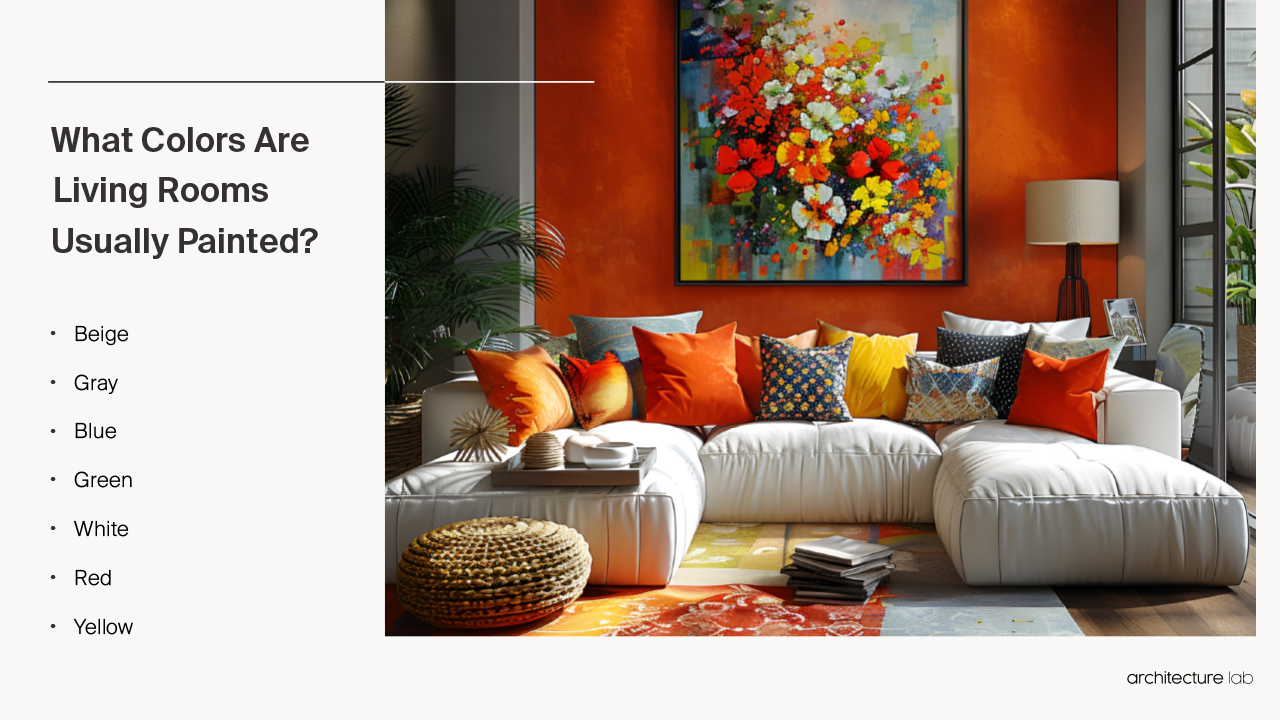
What makes the living room functional?
The living room is functional, well-arranged, well-lit, organized, versatile, and personalized. Firstly, the layout and arrangement of furniture are crucial in a functional living room. The furniture should be arranged to optimize space utilization while creating a comfortable and inviting environment. Secondly, lighting is another essential aspect of a functional living room. A well-lit living room should have layered lighting that illuminates all four corners to create the right mood. Thirdly, the living room should offer ample storage solutions to keep the space tidy and organized. Smart storage solutions help keep clutter at bay, making the room more functional and pleasing. Fourthly, the living room should be designed to facilitate various activities. It should be a place where children can play games or do school work, the family can watch television, and guests can be entertained. Lastly, personal touches and decor pieces add texture, color, and interest to a living room, finishing and personalizing it. This might include lamps, soft furnishings, plants, ornaments, vases, and candles.
How is energy efficiency achieved in a living room?
Energy efficiency is achieved in a living room by choosing the standby power loss, using energy-efficient lighting, improving temperature regulation with insulation and fans, selecting energy-rated appliances, and arranging furniture to optimize airflow. Firstly, energy efficiency in a living room can be achieved by addressing ‘vampire power,’ which refers to the energy consumed by electronics when they are not in use but still plugged in. Unplugging devices or using smart power strips can mitigate this waste. Secondly, optimizing lighting for energy savings is crucial. This includes using energy-efficient light bulbs such as LEDs and natural light during the day. Dimmer switches and timers can help control lighting and conserve energy, like in a greenhouse. Thirdly, temperature regulation can be improved for energy efficiency. Installing heavy curtains can help insulate the room, maintaining a comfortable temperature with less reliance on heating and cooling systems. Fourthly, energy-efficient appliances and electronics in the living room, such as televisions and sound systems, can reduce energy consumption. Selecting products with good energy ratings ensures they use less power during operation. Lastly, furniture placement can also play a role in energy efficiency. By arranging furniture so as not to obstruct heating and cooling vents, air can circulate more effectively, allowing the room to reach the desired temperature more efficiently.
How much does it typically cost to renovate a living room?
The average cost to update an existing 160 square foot (15 square meter) to 325 square foot (30 square meter) living room falls between $7,500 (€6,750, £5,700) to $20,000 (€18,000, £15,000). Cosmetic changes like paint, flooring, and new light fixtures run $7,500 (€6,750, £5,700) to $12,000 (€10,800, £9,000). Structural adjustments like removing walls, expanding footprints, or adding custom built-ins/electrical costs $12,000 (€10,800, £9,000) to $20,000 (€18,000, £15,000). Essential furnishings like sofas run $1,000 (€900, £750) to $4,000 (€3,600, £3,000), and accent chairs/tables span $500 (€450, £375) to $2,000 (€1,800, £1,500).
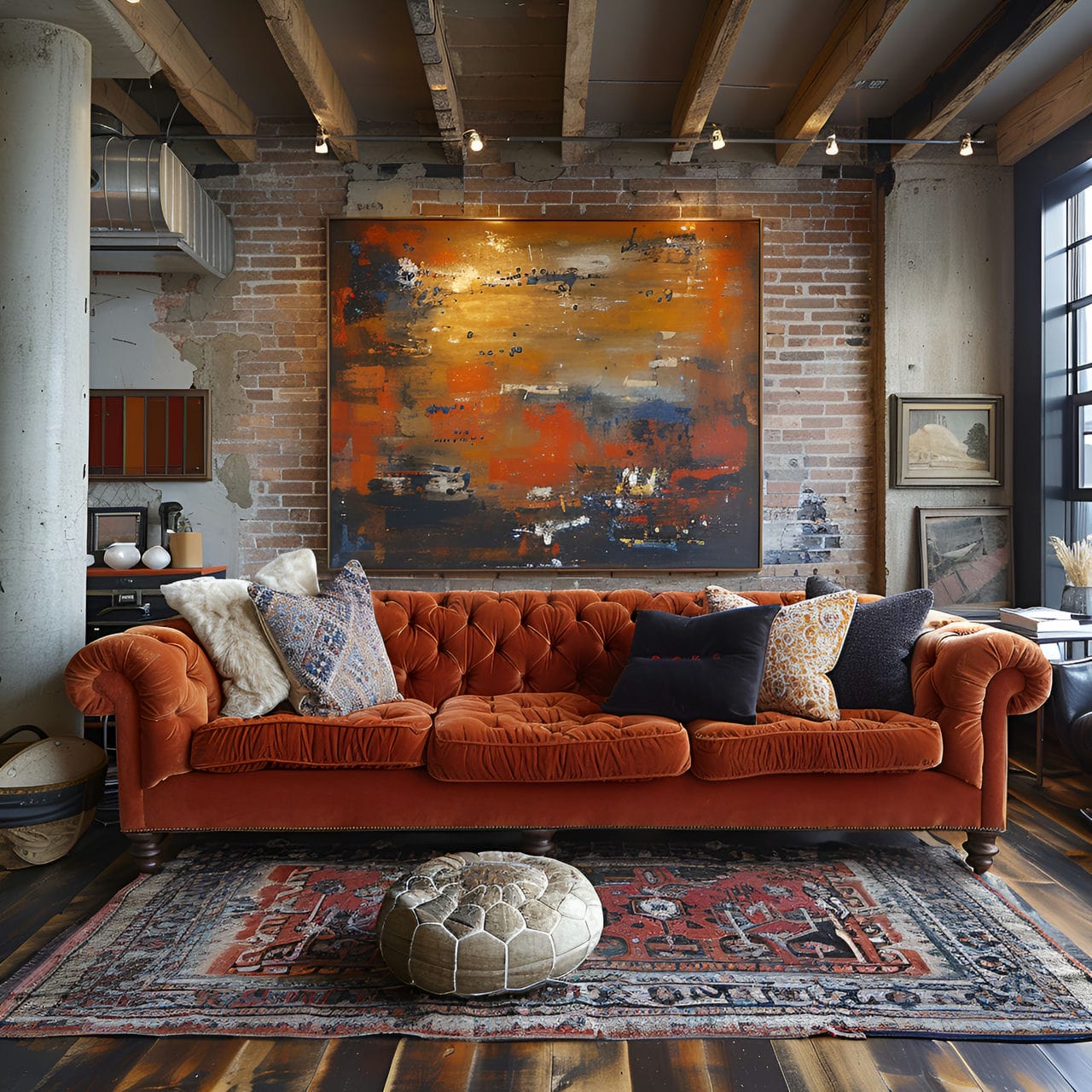
For contemporary open-concept entertaining spaces with designer lighting features, specialty stone floors, niche display built-ins, and AV integration starting at 300 square feet (30 square meters), total transformation budgets exceed $50,000 (€45,000, £37,500). Typical living room updates range from $7,500 (€6,750, £5,700) to $20,000 (€18,000, £15,000) based on layouts and finishes. High-end customized great rooms allow flawless flow for hosting match visions with few budget limitations.
What factors affect the living room renovation?
Listed below are the factors that affect the living room renovation:
- Space layout: The living room layout is a crucial factor in a renovation. It determines the placement of furniture and other elements. The layout should be designed to maximize space, ensure easy movement, and create a comfortable and functional environment.
- Furniture: The type, size, and placement of furniture significantly impact a living room renovation. Furniture should be chosen based on the room’s size, the homeowner’s needs, and the overall design theme.
- Client’s needs: The homeowner’s needs and preferences are paramount in a living room renovation. These may include the need for storage, a workspace, or specific aesthetic preferences. The renovation should meet these needs while creating a comfortable and appealing space.
- Room proportions: The room’s proportions can affect the design and layout of a living room renovation. The size and shape of the room can dictate the placement of furniture and other elements and may also influence the choice of colors and materials.
- Light and ventilation: The availability of natural light and ventilation in the living room is crucial in a renovation. Windows, doors, and other openings should be considered in the design to ensure adequate light and air circulation. This can also influence the choice of window treatments and other design elements.
- Material selection: The choice of materials for flooring, walls, and furniture can affect a living room renovation. Materials should be durable, easy to maintain, and aligned with the desired aesthetic.
- Budget: The budget is a significant factor in any living room renovation. It can dictate the scope of the renovation, the materials used, and the quality of the finishes. A well-planned budget helps ensure the renovation meets the homeowner’s needs and preferences without overspending.
Is an architect required to renovate a living room?
No, an architect is not required to renovate a Living Room, but it is highly advised to hire one. An architect provides expert guidance in design, ensuring that any modifications are pleasing and structurally sound. Their knowledge of building codes and regulations is crucial for significant renovations, such as altering load-bearing walls or changing the room’s layout. An architect can also offer creative solutions to maximize space and functionality, enhancing the appeal and utility of the living room. For complex renovations, the expertise of an architect ensures that the project is executed safely, efficiently, and in compliance with legal requirements.
How can an architect help you upgrade a living room?
Listed below are the ways that an architect can help an owner upgrade a living room:
- Space optimization: An architect can maximize the functionality and aesthetic appeal of a living room by optimizing the use of space. They can reconfigure the layout to improve flow, create distinct areas within the room, and ensure that the space meets the homeowner’s lifestyle needs.
- Lighting design: Architects can enhance a living room by designing a lighting scheme that complements the natural light while providing various illumination levels. They can incorporate task, ambient, and accent lighting to create a warm and inviting atmosphere.
- Material selection: An architect can guide the choice of materials to define the living room’s look and feel. They can recommend durable, sustainable, and appealing materials for flooring, wall finishes, and built-in features.
- Custom furniture and storage: Architects can design custom furniture and storage solutions tailored to the living room. This includes built-in shelving, entertainment units, and other bespoke elements that can enhance the space’s functionality and aesthetics.
- Architectural detailing: An architect can add character to a living room by introducing architectural details such as moldings, wainscoting, or a statement ceiling. These elements can add depth, texture, and a sense of craftsmanship to the room.
- Integration of technology: Architects can integrate technology into the living room design. This includes planning for audio-visual equipment and smart home features and ensuring that all technological elements are functional and discreet.
- Focal points and flow: An architect can create a focal point in the living room, such as a fireplace or a feature wall, which can anchor the space and draw the eye. They can also ensure the room has a good flow, with a layout that guides movement and encourages social interaction.
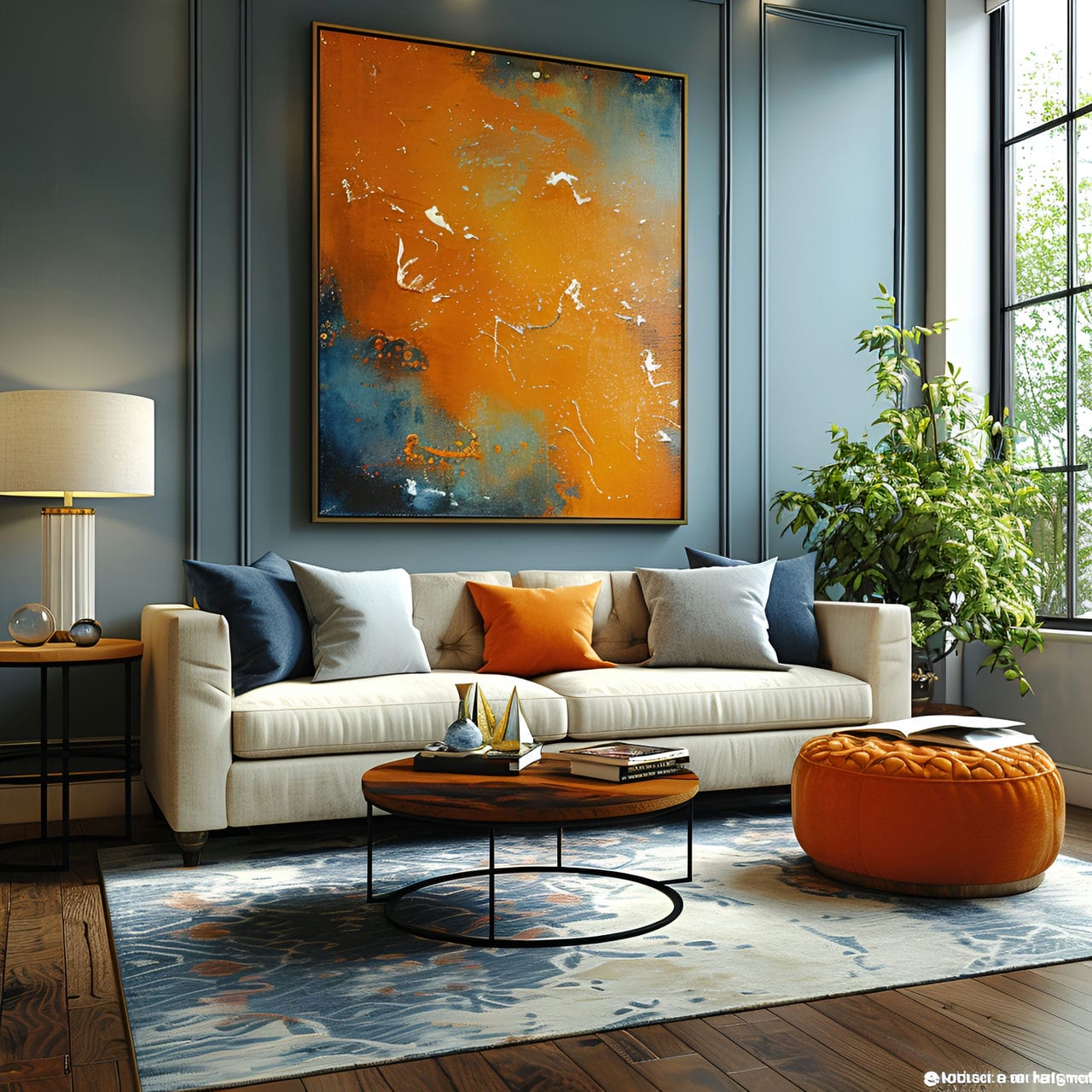
How much does hiring an architect to renovate a living room cost?
The average cost to hire an architect to design a living room renovation ranges from $1,500 (€1,350, £1,150) to $5,000 (€4,500, £3,800) based on the scale and intricacy. Most residential architects charge $100 (€90, £75) to $175 (€155, £135) hourly. Refreshing a modest 160 square foot (15 square meters) living space with simple finishes/furniture layout takes 10-15 hours for fees of $1,500 (€1,350, £1,150). Renovating a 215 square foot (20 square meters) area while incorporating structural changes like removing walls, adding custom built-ins, or specialty lighting requires 20-30 architectural hours averaging $3,000 (€2,700, £2,300). Top-tier interior designers tailoring high-end contemporary open-concept entertaining spaces exceeding 325 square feet (30 square meters) with designer architectural finishes, niche display cases, and integrated technology charge $5,000+ (€4,500+, £3,800+). Their elaborate, coordinated plans demand 40+ hours. Typical living room update concepts run $1,500 (€1,350, £1,150) to $3,000 (€2,700, £2,300), including some customization, while extensively transformed layouts match required work time between $3,000 (€2,700, £2,300) to $5,000+ (€4,500+, £3,800+).
Is it worth it to hire an architect to upgrade a living room?
Yes, hiring an architect is not required to upgrade a carport but is recommended for complex or customized projects. An architect brings specialized expertise in design and structural integrity, ensuring that the upgraded carport is pleasing but also functional and safe. They can offer innovative solutions to maximize space, integrate the carport seamlessly with the existing house design, and increase property value. Architects know about local building codes and regulations, which is crucial for structural modifications. Their involvement can be beneficial if the upgrade involves converting the carport into a garage or adding storage or living spaces.
How long is needed to redecorate a living room?
To redecorate the living room, a timeframe of 2 to 8 weeks is needed. Firstly, redecorating a living room requires 2 to 8 weeks. Firstly, basic redecoration tasks such as painting, changing curtains, or rearranging furniture can be completed within 2 to 3 weeks. This includes preparation, application, and drying time for paint and acquiring and setting new furnishings. Secondly, adding new furniture or updating fixtures extends the timeline to 3 to 4 weeks if readily available. This accounts for the delivery and assembly time of fresh pieces. Thirdly, for more comprehensive redecoration involving flooring replacement, significant layout changes, or custom-built elements, the timeline can stretch to 5 to 6 weeks. Lastly, incorporating custom-made features like furniture or made-to-order decorative items can extend the project to 7 to 8 weeks, considering manufacturing and delivery times.
What are the struggles of the homeowner to redecorate a living room?
Listed below are the struggles of the homeowner to redecorate a living room:
- Budget Constraints: Homeowners often struggle with budget constraints when redecorating their living rooms. Costs can quickly escalate with purchasing new furniture, hiring professionals for painting or structural changes, and buying decor items. Homeowners must balance their vision with financial reality, often leading to compromises on materials, design elements, or the project’s scope.
- Design Decision Overwhelm: Choosing a cohesive design for the living room can be overwhelming. This indecision can lead to a disjointed aesthetic or dissatisfaction with the final result. The challenge lies in creating a design that reflects personal taste while being functional and comfortable.
- Limited Space: Maximizing limited space in a living room is a common struggle. Homeowners must find creative ways to make the room appear spacious and inviting without sacrificing functionality. This involves choosing the right furniture size, clever storage solutions, and a layout that optimizes flow and usability.
- Finding Reliable Contractors: Locating and hiring reliable contractors for renovation work can be a significant hurdle to living rooms. Homeowners must navigate many options, assess the quality of work, negotiate costs, and ensure timely completion.
- Disruption and Inconvenience: The disruption and inconvenience caused by redecorating can be a struggle. Living rooms are central to daily life, and redecoration can disrupt routines. Noise, dust, and the unavailability of the space during the project are common issues.


